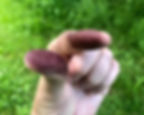St. John's Wort
- katemacquarrie22
- Jul 30, 2023
- 2 min read
PEI has a wealth of medicinal wild plants. One of the most well-studied is Common St. John’s Wort (Hypericum perforatum, Photo 1).

St. John’s Wort was traditionally used internally to treat diarrhea, bladder problems, respiratory issues, insomnia, and depression, and externally to treat wounds and skin irritations. Interest in its use for insomnia and depression grew in the 20th century, and the late 1900s saw dozens of randomized clinical trials involving thousands of patients. The results have been consistent: St. John’s Wort is as effective as medical antidepressants for treating mild to moderate depression, with fewer side effects. It also has confirmed antibacterial, antiviral, and anti-inflammatory effects, has shown promise in treatment of symptoms of PMS and menopause, and is being researched as a possible treatment for melanoma and other cancers.

If you look closely at the flowers and leaves of St. John’s Wort, you’ll notice tiny black dots around the edges (Photo 2). Those are glands containing a purple, bioactive compound called hypericin. If you squeeze the yellow flowers between your fingers, they’ll get covered in hypericin (Photo 3). While you’re looking at the leaves, you may also notice many tiny holes or perforations (hence the ‘perforatum’ species name). These are translucent glands that produce another bioactive compound called hyperforin.

While hypericin and hyperforin are responsible for St. John’s Wort’s medicinal value, each does have some potential adverse effects. Hypericin travels through the bloodstream to both skin and eyes where it can cause sensitivity to sunlight, especially in light-skinned people. Hyperforin has been shown to interact with prescription drugs including some antidepressants, immunosuppressants, blood thinners, heart medicines, and oral contraceptives, among others. It’s generally recommended to avoid sun exposure while using St. John’s Wort, and to consult your health care provider if you are taking any other medication.
St. John’s Wort is a European species that was first brought to North America in the late 1700s. It has been known on PEI since at least the mid-1800s, and is common along roadsides and trails, and in old fields across the Island. It will happily colonize pastures, but this is not a plant you want cattle, horses, pigs, sheep, or goats to eat. The hypericin mentioned above can make them extremely photosensitive. If unnoticed and untreated, St. John’s Wort poisoning in livestock can be fatal.
It's tempting to think of natural remedies as risk-free. I’ve seen many comments along the lines of “if Nature produces it, it must be safe”. That is simply not true. Nature produces a myriad of amazing chemicals – some helpful, some harmful, and some that can be both depending on how they’re used. When using medicinal wild plants, it’s essential not only to ensure correct identification but also to understand the risks and know when and how to use them.
Common St. John’s Wort is another part of PEI untamed!
